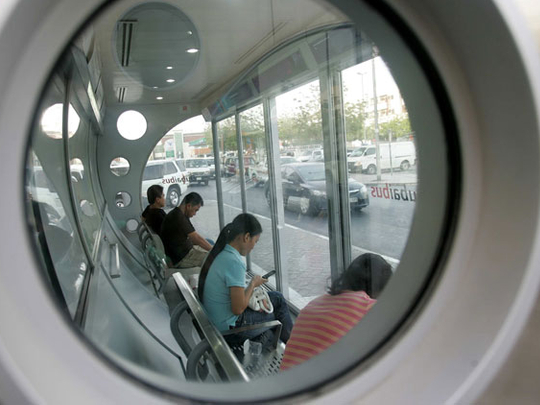
The heating, ventilation, and air conditioning (HVAC) market in the GCC is forecast to grow at a compound annual rate of 7.43 per cent until 2016 and the key factor for this growth is the upturn in construction activity.
The HVAC Market in GCC 2012-2016 report, released by UK-based research company Technavio, states that while the market is being led by the deployment of new energy-efficient systems, it is also being challenged by increasing competition between vendors, including companies such as Carrier Corporation, Daikin Industries, Ingersoll Rand, Johnson Controls, Zamil Group, Dwyer Instruments, LG Corp, Mitsubishi Electric, Samsung Electronics and Voltas.
Last year, the HVAC market in the GCC was worth about $3 billion (about Dh11 billion). More than half of this constituted the residential market, with the rest making up commercial air conditioning. The UAE market stood at around $850 million and is forecast to cross the $1-billion mark in 2018.
“The HVAC industry in the GCC has managed the economic downturn much better than most developed markets around the world and saw average annual growth in expenditure of 12 per cent from 2008 to 2011,” says Andrew DeGuire, Vice President of Strategy and Acquisitions for the energy and operational efficiency specialist, Johnson Controls. His prediction is in line with the Technavio study.
However, there are regional differences in market growth. Saudi Arabia has the strongest air-conditioning industry in the GCC, where management consulting firm TechSci Research forecast 10 per cent annual growth through to 2018.
“The education, residential and health-care sectors will be the major demand generators for the air conditioners market [in Saudi Arabia], due to increasing government initiatives directed towards these sectors,” says Karan Chechi, Research Director, TechSci Research.
“Moreover, the country’s air-conditioning sector is going to be highly competitive over the forecast period due to the emergence of a large number of players in the market. Expected technological advancements coupled with the introduction of new energy-efficient models will continue to propel the demand in coming years,” he adds.
Other growing markets are Kuwait and Oman, while Qatar is forecast to see growth of 6 per cent a year. In the UAE, sector growth will be driven by resumed developments and other mega infrastructure projects revolving around Expo 2020.
It is estimated that if the GCC maintains its existing pattern of cooling technology deployment with heavy reliance on conventional technologies, countries in the region will have to invest approximately $100 billion in total by 2030 for new cooling capacity, and more than $120 billion for new power capacity says consultancy Booz & Company, now part of PwC.
District cooling is currently one of the three main systems used for air conditioning in the region. The other two are conventional window units or split systems and central air or water-cooled chillers. District cooling is decentralised and involves a central plant supplying chilled water through a network of pipes to multiple buildings within a local area.
Consultants recommend a shift towards greater use of district cooling, which is seen as more effective.
“By pooling demand for air conditioning, district cooling is significantly more cost effective over the long term than any other system currently being employed at individual building level. It also has less negative environmental impact than conventional solutions,” says George Sarraf, Partner, Booz & Company.
New advanced technologies are also being increasingly deployed. Evaporative cooling is seen to have huge growth potential in the GCC. Unlike traditional air conditioning systems that operate on a vapour compression technique, evaporative cooling works on the concept of water’s large enthalpy (a thermodynamic quantity equivalent to the total heat content of a system) of vaporisation, and decreases electricity costs through lower energy consumption. Such systems are good for public buildings and spaces such as schools, factories, bus stops, sports grounds and outdoor swimming pools.
The phase out of hydrochlorofluorocarbon refrigerants (HCFCs), seen as playing a part in ozone layer depletion, will also open new avenues for innovative technologies. Ultimately, most countries are expected to replace HCFCs with hydrofluorocarbons, which have no greenhouse gas potential, by 2030. The UAE started phasing out HCFCs last year and will replace HCFC chillers completely between 2030 and 2040, for which a directive will be issued. Importers of the substance will be given quotas until then with imports gradually being reduced to zero.
In terms of energy-efficient air conditioning, GCC countries have seen a growing number of regulations in the past, for example through the Emirates Green Building Council in the UAE. Such regulations suggest that inefficient air conditioning and ventilation systems will gradually be replaced by modern systems, which will result in higher initial costs being incurred, but will also reduce energy consumption by up to 40 per cent in the long term. This translates into the potential for high savings given that air conditioning consumes almost two-thirds of the electricity used in a building within the region.











